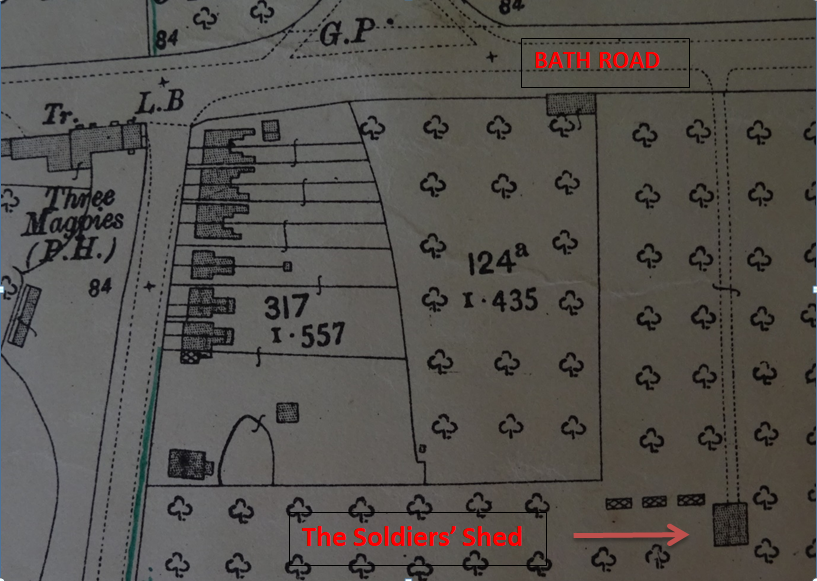 |
King George III of
Great Britain was a shy man. He did not like travelling nor meeting people. As
he got older he made Windsor Castle his principle dwelling, and spent a lot of money on renovating and furnishing the castle to his
taste. Occasionally he had to
travel to London for matters of state.
The journey between London and Windsor took him along the Bath Road through the villages of Hounslow and across the notoriously dangerous Hounslow Heath to Longford in Middlesex. Previous Monarchs would make a stop at the Kings Head in Longford (later called the Peggy Bedford) to change the carriage horses. However George III did not like meeting the public so he had his own stables built along the route. One was at Hounslow and another one was a mile from Longford near the 14th milestone (measured from Hyde Park Corner). These buildings were isolated, square brick buildings with bright red pantiled roofs, with doors at the front and windows that faced up and down the road.[1]
On a cold damp winter’s day in January 1805, George III was returning to Windsor from making what turned out to be his last speech at the Opening of Parliament. He sat snugly in his carriage wrapped in fur rugs and, as the carriage and his military escort stopped at a modest building known locally as the “Soldier’s Shed” on the Great Bath Road not far from Longford. [2] There, already waiting for his arrival were another troop of escorting soldiers ready to take over escorting the King to Windsor. Only this day it was different. Unfortunately, due to bad communication, two military parties turned up to take over as escort to the King. After the change of horses, as the carriage continued its journey towards Longford, the Light Dragoons took their place as the escort. The Oxford Blues insisted it was their duty and a scuffle ensued. Both parties defended themselves with swords drawn whilst his Majesty’s carriage was still going on at the usual pace and each party doing its duty and trying to keep position as escort. After some distance, the Light Dragoons gave up and the Blues continued as escort.[3] Out in the fields alongside the Bath Road watching the entertaining spectacle of two mounted troops fighting each other, were the field workers who politely doffed there caps as the King’s carriage passed, puffed on their clay tobacco pipes and then returned to their toil.
This was one of the last journeys King
George III made. With the reclusive King now living at Windsor Castle, the “soldiers shed”,
and the one and a quarter acres around it, were no longer used, but stayed in
the possession of the Crown Estates until 1859, when Queen Victoria’s
Commissioners of Her Majesty’s Woods Forests and Land Revenues sold it to local
landowner, William Philp for £60.[4] The building was still there in 1910 although
in a decrepit state.
The place were the “soldier’s shed” once stood is now the offices of HM Customs and Excise. This building is sandwiched between the Bath Road (A4) and the northern perimeter road of Heathrow airport. Its carpark the replacement for the green field on which the Royal Horses once grazed.
 |
| The site of the Soldier's Shed today |
[1] Harper, Charles G., Half-hours with the Highwaymen, (London, 1908)
[2]Belsham, William, Memoirs of the Reign of George III.:
From the Treaty of Amiens, A. D. 1802, to the Termination of the Regency, A. D.
1820 : in Two Volumes, Volume 1, (Hurst, Robinson, 1824 - Great Britain) p.80
[3] Evening Mail - Monday 21 January 1805
[4] London Metropolitan Archives. Acc2305/PH/17/1[?]
